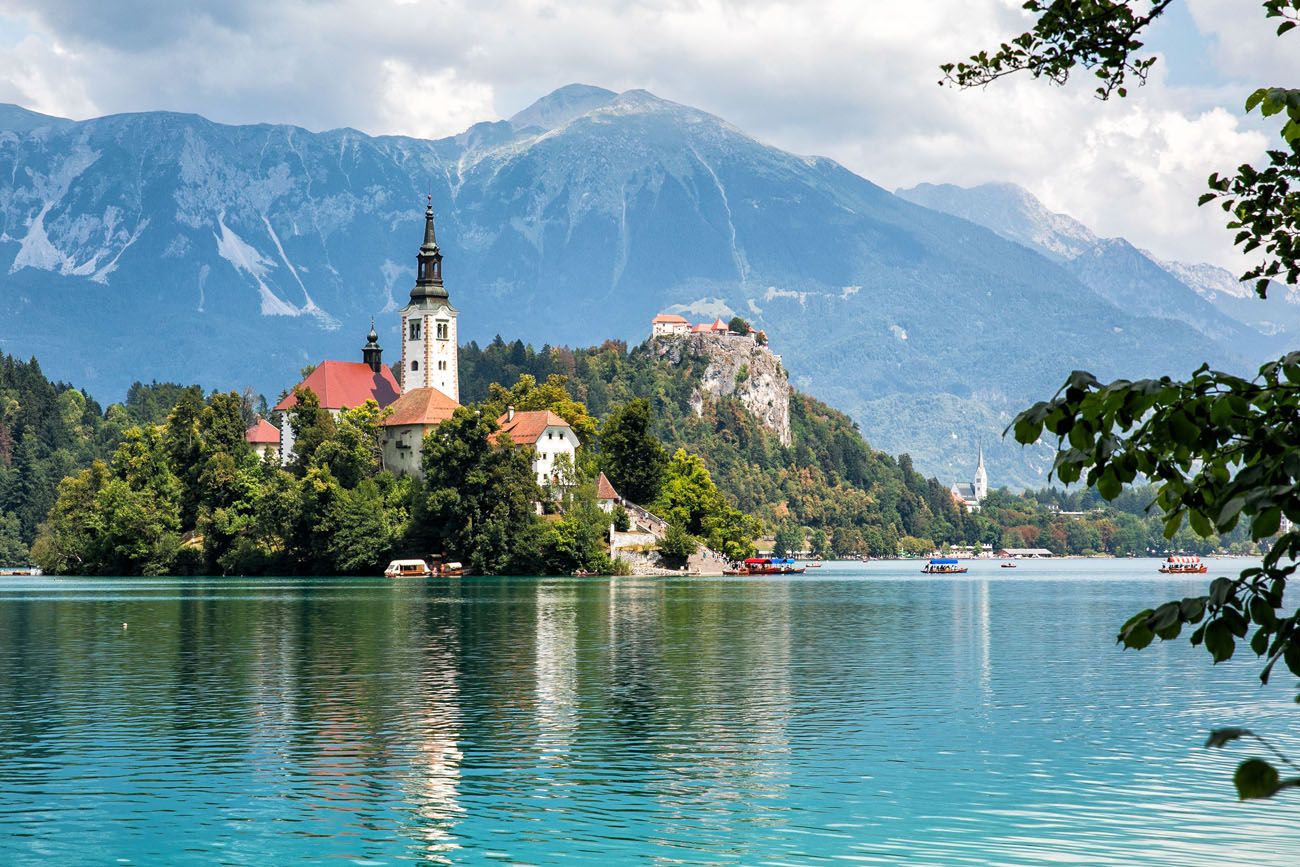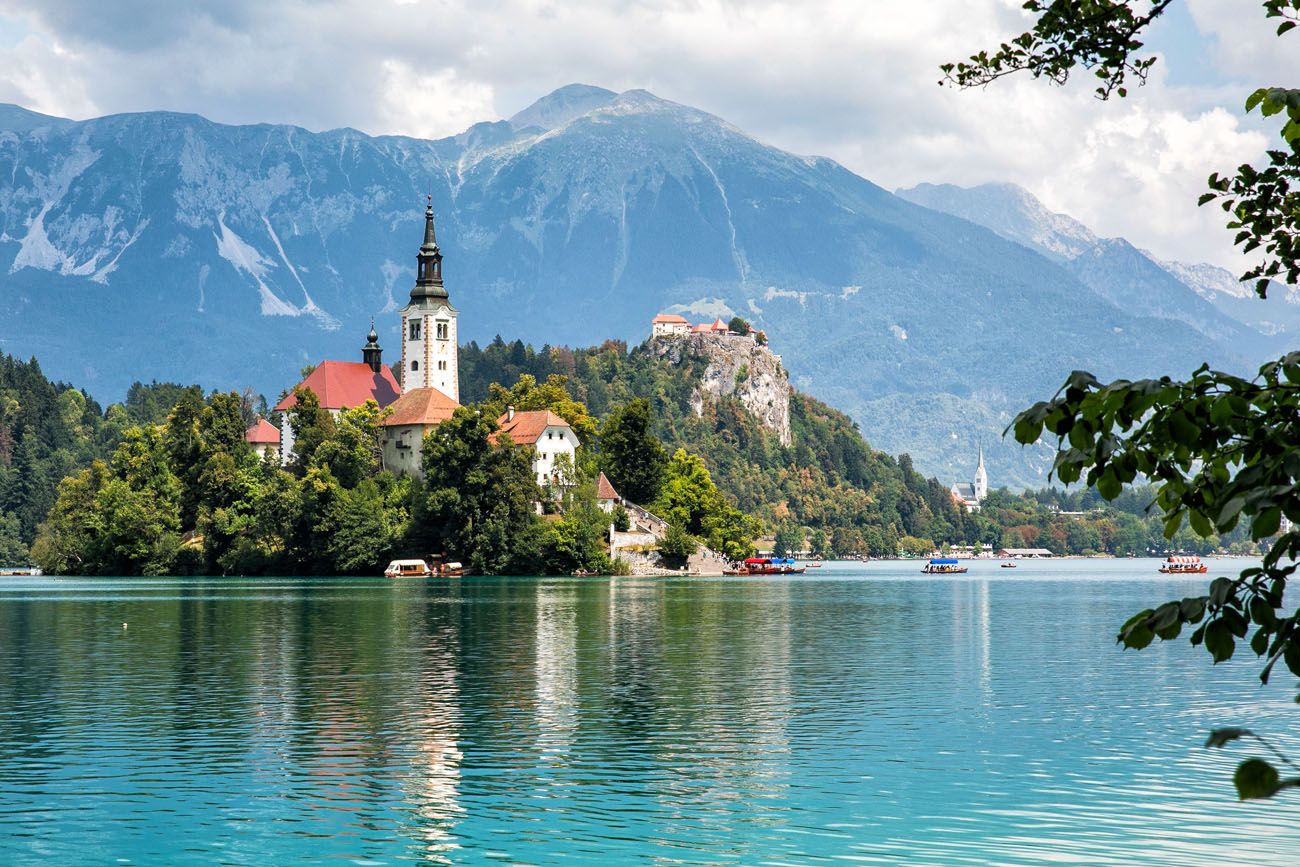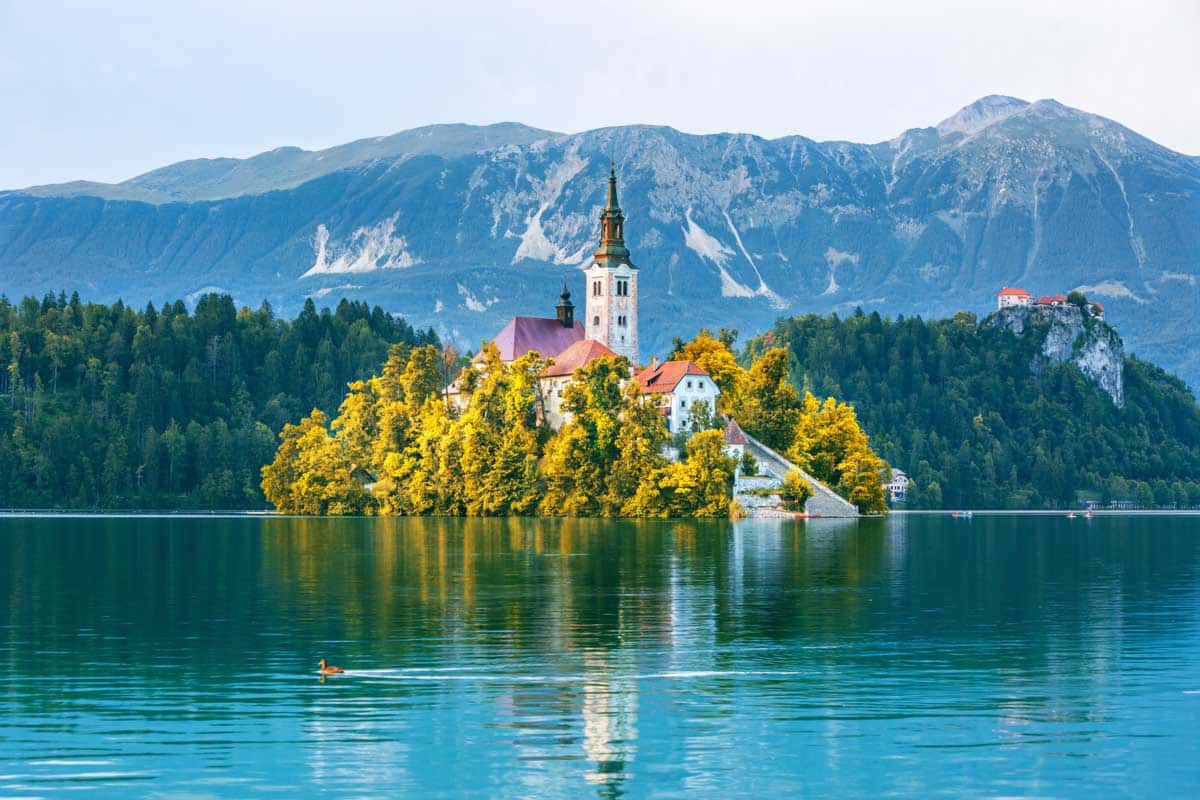
Nestled between the Alps and the Adriatic, Slovenia is a country that punches far above its weight in terms of natural beauty, rich history, and diverse experiences. Often overlooked in favor of its larger neighbors, this emerald gem of Europe offers a captivating blend of alpine grandeur, Mediterranean charm, and a vibrant cultural tapestry. From snow-capped peaks and emerald rivers to ancient castles and bustling cityscapes, Slovenia promises an unforgettable adventure for every traveler.
This comprehensive guide will delve into the heart of Slovenia, uncovering its most breathtaking attractions, tracing its fascinating history, and equipping you with essential travel tips to make your journey seamless and rewarding. We’ll explore accommodation options to suit every budget, navigate transportation networks, and pinpoint the best times to experience this captivating nation.
A Glimpse into Slovenia’s Storied Past

Related Articles about Slovenia: A Pocket-Sized Paradise of Enchantment:
- The Golden Gate Beckons: A Comprehensive Travel Guide to San Francisco
- Unveiling the Philippines: A Guide to Paradise Found
- Croatia: A Sun-Kissed Symphony of History, Nature, and Coastal Charm
- Peru: A Tapestry of Wonders – Your Ultimate Guide to Adventure and Discovery
- Switzerland: A Symphony of Alpine Majesty and Timeless Charm
Slovenia’s history is a complex and layered narrative, shaped by millennia of migrations, empires, and struggles for independence. Evidence of prehistoric settlements, including the remains of Neanderthal man, attests to its ancient origins. The region was later inhabited by Celtic tribes and then incorporated into the Roman Empire, leaving behind impressive archaeological sites.
The arrival of Slavic tribes in the 6th century laid the foundation for the Slovene language and identity. For centuries, Slovene lands were part of various Germanic states, most notably the Holy Roman Empire and later the Austro-Hungarian Empire. This long period of Habsburg rule left an indelible mark on Slovenia’s architecture, culture, and administrative systems.
The 20th century brought profound changes. Following World War I, Slovenia became part of the Kingdom of Serbs, Croats, and Slovenes (later Yugoslavia). During World War II, it was occupied by Nazi Germany and Fascist Italy. After the war, it remained a constituent republic within socialist Yugoslavia.
Slovenia’s most defining moment arrived on June 25, 1991, when it declared independence from Yugoslavia. The brief Ten-Day War followed, after which Slovenia emerged as a sovereign nation. This hard-won freedom has been celebrated with pride and has ushered in an era of democratic governance and European integration, with Slovenia joining the European Union in 2004.
Unveiling Slovenia’s Top Attractions: A Tapestry of Wonders
Slovenia’s compact size belies the sheer abundance of its natural and cultural treasures. Here are some of the must-visit destinations that capture the essence of this enchanting country:
1. Lake Bled: The Fairytale Icon
No visit to Slovenia is complete without experiencing the ethereal beauty of Lake Bled. This glacial lake, with its impossibly picturesque island church and medieval cliffside castle, is the epitome of Slovenian postcard perfection.
- Bled Island: Take a traditional Pletna boat, rowed by skilled oarsmen, to the island. Ring the wishing bell in the Assumption of Mary Church for good luck.
- Bled Castle: Perched dramatically on a rocky outcrop, the castle offers panoramic views of the lake and surrounding Julian Alps. Explore its museum and enjoy a traditional Slovenian meal at its restaurant.
- Vintgar Gorge: A short drive from Bled, this stunning gorge offers a captivating walk along wooden walkways suspended over the Radovna River, with waterfalls and rapids providing a dramatic backdrop.

2. Ljubljana: The Charming Capital
Ljubljana, often described as a miniature Prague, is a vibrant and welcoming capital city that effortlessly blends historic charm with a youthful, creative energy. Its pedestrian-friendly Old Town, bisected by the Ljubljanica River, is a delight to explore.
- Ljubljana Castle: Ascend to the castle for sweeping views of the city and the Alps. Its ramparts, museum, and exhibitions offer insights into Ljubljana’s past.
- Tromostovje (Triple Bridge): Designed by the renowned architect Jože Plečnik, this iconic bridge is a central meeting point and a testament to Plečnik’s enduring influence on the city’s architecture.
- Preseren Square: The heart of the city, named after Slovenia’s national poet France Prešeren, is a lively hub with the Franciscan Church of the Annunciation and a statue of the poet himself.
- Central Market: Immerse yourself in the local atmosphere, sample fresh produce, and discover artisanal crafts.
- Dragon Bridge: Guarded by its famous dragon statues, this Art Nouveau bridge is a symbol of the city.
3. Postojna Cave and Predjama Castle: Subterranean Marvels and Architectural Ingenuity
Prepare to be awestruck by the natural wonder of Postojna Cave, one of the most extensive karst cave systems in the world.
- Postojna Cave: Embark on an unforgettable train ride deep into the earth, marveling at the spectacular stalactites, stalagmites, and underground formations. The cave is also home to the unique olm, a blind salamander.
- Predjama Castle: Just a short distance from the caves, this dramatic castle is built into the mouth of a cave, creating a truly unique and imposing sight. Explore its medieval interiors and learn about the legend of its defiant knight, Erazem.
4. Triglav National Park: The Alpine Heart of Slovenia
For nature lovers and outdoor enthusiasts, Triglav National Park is an unparalleled destination. Home to Mount Triglav, Slovenia’s highest peak, this park boasts breathtaking alpine scenery, pristine lakes, and diverse wildlife.
- Lake Bohinj: A larger and more tranquil alternative to Lake Bled, Lake Bohinj is a haven for hikers, swimmers, and kayakers. The Vogel cable car offers spectacular panoramic views.
- Soča Valley: Renowned for its emerald-green Soča River, this valley offers thrilling white-water rafting, kayaking, and hiking opportunities. The region also holds poignant historical significance from World War I.
- Hiking Trails: Numerous trails cater to all levels, from gentle walks to challenging climbs leading to stunning viewpoints.
5. Piran: The Adriatic Gem
On the short Slovenian coastline, the charming Venetian-inspired town of Piran is a delightful escape. Its narrow cobblestone streets, colorful buildings, and stunning sea views create an idyllic atmosphere.
- Tartini Square: The main square, named after the renowned violinist Giuseppe Tartini, is a vibrant hub with cafes and restaurants.
- St. George’s Parish Church: Climb to the top of its bell tower for breathtaking views of the Adriatic Sea and the terracotta rooftops of Piran.
- Walls of Piran: Walk along the ancient town walls for a different perspective of the town and its picturesque surroundings.
6. Maribor and the Wine Regions:
Slovenia’s second-largest city, Maribor, is nestled amidst rolling vineyards. It offers a charming city center and is the gateway to some of the country’s most celebrated wine regions.
- Old Vine House: Visit the oldest vine in the world, still producing grapes, a symbol of Maribor’s rich winemaking heritage.
- Wine Tasting Tours: Explore the picturesque wine routes of Styria and Primorska, sampling local varietals and enjoying the scenic countryside.
Essential Travel Tips for a Seamless Slovenian Adventure
To make the most of your Slovenian sojourn, consider these practical tips:
- Currency: The currency is the Euro (€).
- Language: The official language is Slovenian. English is widely spoken in tourist areas, and German and Italian are also understood in some regions.
- Visa: Slovenia is part of the Schengen Area, so citizens of many countries do not require a visa for short stays. Check the latest visa requirements for your nationality.
- Connectivity: Wi-Fi is readily available in hotels, cafes, and public spaces. Consider purchasing a local SIM card for affordable data.
- Tipping: Tipping is not obligatory but is appreciated for good service. A 5-10% tip in restaurants is customary if you’re satisfied.
- Safety: Slovenia is a very safe country with low crime rates. However, as with any travel, it’s wise to remain aware of your surroundings.
- Respect Local Customs: Be mindful of local etiquette, particularly when visiting religious sites. Dress modestly when entering churches.
- Tap Water: Tap water in Slovenia is safe and delicious to drink.
- Driving: If you plan to drive, ensure you have a valid international driving permit if required. Vignettes are mandatory for using motorways and expressways.
Accommodation Options: A Haven for Every Traveler
Slovenia offers a diverse range of accommodation to suit every taste and budget, from luxurious hotels to cozy guesthouses and charming campsites.
- Hotels: You’ll find a wide selection of hotels, from international chains to boutique establishments, particularly in larger cities and popular tourist destinations like Bled and Ljubljana.
- Guesthouses (Penzioni) and Bed & Breakfasts: These offer a more intimate and often more affordable experience, providing a glimpse into local hospitality. Many are family-run and offer home-cooked breakfasts.
- Apartments and Holiday Homes: Ideal for families or longer stays, apartments provide self-catering facilities and a sense of home away from home.
- Farm Stays (Turistične kmetije): Immerse yourself in rural life by staying at a working farm. You’ll often enjoy delicious homemade food and a peaceful atmosphere.
- Hostels: A budget-friendly option, hostels are great for solo travelers and backpackers, offering dormitory-style rooms and social common areas.
- Campsites: Slovenia boasts numerous well-equipped campsites, often set in beautiful natural surroundings, perfect for nature enthusiasts.
Navigating Slovenia: Transportation Made Easy
Slovenia’s efficient transportation network makes it easy to explore the country’s diverse landscapes.
- Trains: Slovenia has a well-developed railway network connecting major cities and towns. Trains are a comfortable and scenic way to travel, especially for journeys between Ljubljana, Bled, and Maribor.
- Buses: Buses are an extensive and often more frequent option for reaching smaller towns and villages not served by trains. Companies like Nomago and Arriva operate intercity routes.
- Cars: Renting a car offers the greatest flexibility, allowing you to explore off-the-beaten-path destinations and national parks at your own pace. Remember to purchase a vignette for motorway usage.
- Cycling: Slovenia is a cyclist’s paradise, with dedicated cycling routes and stunning scenery. Many towns offer bike rental services.
- Taxis: Taxis are available in cities and towns, but can be more expensive than public transport. Ride-sharing services are less prevalent.
- Ferries: For coastal exploration, ferries operate between some coastal towns and islands.
The Best Time to Visit Slovenia: Seasons of Enchantment
Slovenia offers unique charms throughout the year, making it a year-round destination. The best time to visit depends on your interests:
- Spring (April-May): Witness the country come alive with blooming wildflowers and pleasant temperatures. It’s ideal for hiking and exploring cities before the summer crowds.
- Summer (June-August): This is the peak tourist season, offering warm weather perfect for outdoor activities like swimming, hiking in the mountains, and enjoying festivals. Expect larger crowds and higher prices.
- Autumn (September-October): Slovenia transforms into a canvas of vibrant autumn colors, particularly in the vineyards and mountainous regions. It’s a fantastic time for hiking, wine tasting, and enjoying fewer crowds.
- Winter (November-March): For winter sports enthusiasts, Slovenia is a snowy wonderland. Ski resorts in the Julian Alps offer excellent skiing and snowboarding opportunities. The Christmas markets in cities like Ljubljana are also a magical experience.
Embark on Your Slovenian Adventure
Slovenia is a country that captivates with its natural beauty, rich history, and welcoming spirit. Whether you’re seeking adventure in the Julian Alps, relaxation by the Adriatic Sea, or cultural immersion in its charming cities, Slovenia promises an unforgettable journey. Pack your bags, open your heart to discovery, and prepare to be enchanted by this small but extraordinary corner of Europe.





